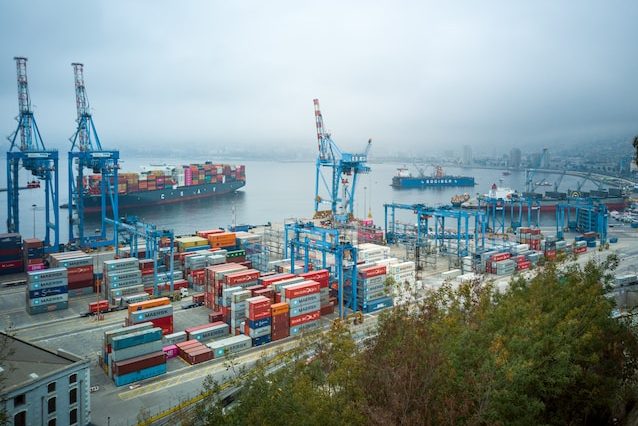In today’s competitive business landscape, business owners must maintain a highly reliable supply chain to ensure they retain access to the best quality materials. Business owners must also ensure that their management systems prioritize rigorous quality testing. This won’t just improve the standards of their products and services but can also help foster trust and reliability with their target markets.
The attainment of ISO certification exemplifies this commitment to excellence. These internationally standardized accreditations cover five critical management systems, including Environmental Management Systems (ISO 14001 and related standards) and Quality Management Systems (ISO 9001 and related standards). When investing in quality control for your supply chain, business owners can integrate the guidelines related to Quality Management Systems (QMS) into their organization’s management practices. This can effectively make quality control a fixture of your business operations.
But what exactly is quality control, and how can one business effectively implement it to enhance its product and service standards? This article will explore several ways to invest in quality control for your company’s global supply chain. We will explore the significance of ISO certification like QMS and examine alternative quality control methods to further enhance your operations and product standards.
Keep reading to learn more about optimizing your quality management practices.
The importance of collaborating with ISO-certified suppliers
Regarding sourcing suppliers, those with ISO certification are always more likely to provide higher quality products and materials than those without these accreditations. This is because suppliers who have obtained their ISO 9001 certification have effectively showcased their commitment to maintaining a well-structured quality management system.
Collaborating with ISO-certified suppliers ensures that your supply chain can operate smoothly and minimizes your risks of receiving lower or fluctuating-quality supplies.
Develop a Robust Production Part Approval Process (PPAP)
Enacting an effective Production Part Approval Process (PPAP) is another critical component of maintaining superior quality control within your supply chain. The PPAP process consists of 18 documents (e.g. design record, control plan, dimensional results, etc.) that are used to minimize risks like poor quality or performance faults before the release of a product.
The purpose of PPAP is to verify the ability of the supplier to reliably meet the customer’s design specification and quality requirements for their products. It also helps to validate the production process by conducting inspections on parts at various stages. There are five submission levels for PPAP, which includes XXX. The advantage of implementing PPAP is to help maintain greater design integrity and improve the overall quality of the product and customer satisfaction. It ensures the products are in good shape and reduces costs for poor-quality products.
Always conduct due diligence.
Another pivotal way to ensure quality control across your global supply chain is by conducting thorough due diligence before signing contracts with new suppliers. Due diligence is collecting and analyzing information on a prospective supplier (or other business investment) to identify and avoid potential risks before a partnership.
One of the best ways to conduct due diligence when assessing prospective suppliers is by checking supplier ratings and testimonials to ensure they have a strong track record of delivering high-quality products or services, meeting deadlines consistently, and maintaining good relationships with their clients. Doing this background research can help ensure that your shortlisted suppliers align with your business’s quality standards and expectations.
The benefits of practicing due diligence can be more substantial than expected. Firstly, it empowers your company to identify and mitigate risks within its supply chain, both within ethical standards and legal industry or consumer requirements. This helps your business avoid litigation or developing a negative reputation if your enterprise is found to be violating industry quality standards.
Secondly, conducting thorough due diligence can contribute to the cost-effectiveness of your company’s supply chain operations (and all other company investment decision-making). By identifying potential risks and problems earlier, your company can proactively address them, improving efficiency and reducing costs over the long term. This approach can help your business stay competitive in today’s dynamic global market.
Find suppliers who are mindful of their carbon emissions.
Regarding ensuring quality control within a global supply chain, another great green flag to look out for is suppliers committed to reducing their carbon emissions. This strategic move won’t just help your enterprise invest in its sustainability, but it can also provide peace of mind that you’re working with ethical and conscientious suppliers.
More often than not, suppliers committed to reducing their carbon footprint often showcase a broader dedication to maintaining responsible business operations. This commitment can extend to quality control, ensuring that the products and materials they provide can meet strict quality criteria and environmental standards.
By partnering with these suppliers, you can establish a reciprocal relationship where quality and sustainability complement each other. In short, it’s a win-win scenario where your supply chain delivers high-quality products and aligns with your company’s environmental values.
Building up collective responsibility
Finally, quality management should extend beyond individual departments or supply chain stages, becoming a shared responsibility across all facets of your operation. It is imperative that every single member of your team understands the importance of quality control and actively contributes to ensuring quality across all your company’s operations. This collective commitment can be fostered through leadership commitment, where senior leaders set an example for their respective departments.
Alongside this, providing regular training and educational opportunities helps ensure that all employees, regardless of their role, have a firm grasp of quality standards and can implement best practices effectively. This approach cultivates a culture where quality is a shared objective, and each team member plays a crucial role in upholding this responsibility. By fostering a quality culture throughout your business, you can equip your enterprise with all that it needs to better identify and rectify potential barriers to ensuring the consistent quality of your products, services, and materials you receive from global suppliers.
~
In a world where quality is king, elevating your quality control efforts is not merely a strategy but an investment in excellence for your enterprise. So, take your time to fortify your company’s commitment to quality control. By doing so, you’ll be able to chart a clear path to triumph with a supply chain that’s poised to maintain your company’s standards over the long term.
*This is a Sponsored Article








